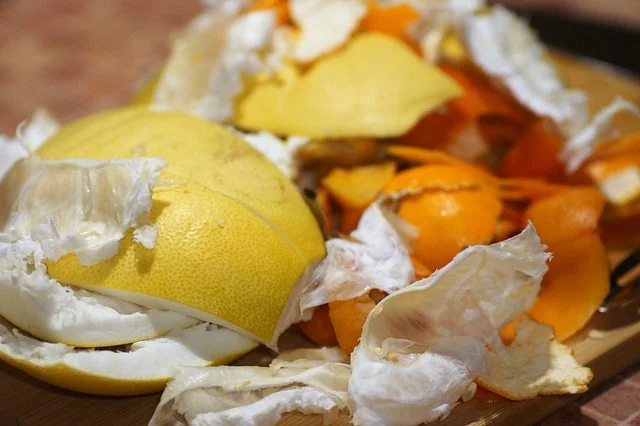Composting for Fine Gardening: Building Healthy Soil in 2024
Table of Contents
Use kitchen scraps, leaves, and grass clippings to create compost. Composting improves soil structure, adds nutrients, and helps retain moisture.

Composting is an essential practice for any gardener looking to enhance soil quality and promote a thriving garden. By turning organic waste into nutrient-rich compost, you not only reduce landfill waste but also create a powerful soil amendment that can help plants flourish. For fine gardening enthusiasts in the U.S., composting is an easy and effective way to boost plant health, improve soil structure, and promote sustainability.
Why Composting is Essential for Fine Gardening
Healthy soil is the cornerstone of a beautiful, fruitful garden. Compost is packed with essential nutrients that plants need, such as nitrogen, phosphorus, and potassium. In addition to providing nutrients, compost improves soil structure, enhances moisture retention, and encourages beneficial microorganisms. Fine gardens, known for their intricate designs and diverse plantings, benefit immensely from the organic matter compost provides, ensuring that plants get the support they need to thrive.
Getting Started: What to Compost ?

To start composting, you’ll need to combine the right materials. A good compost pile balances two types of ingredients: greens and browns.
- Greens: These are nitrogen-rich materials that decompose quickly, providing essential nutrients for plants. Examples include:
- Fruit and vegetable scraps
- Coffee grounds and tea leaves
- Grass clippings
- Fresh garden trimmings
- Browns: These carbon-rich materials break down more slowly and help add structure to your compost. Examples include:
- Fallen leaves
- Straw and hay
- Shredded newspaper and cardboard
- Twigs and small branches
A proper mix of greens and browns is key to maintaining an effective compost pile. Aim for a ratio of about 2-3 parts browns to 1 part greens to keep the compost from becoming too wet or smelly.

How to Compost: Simple Steps for Success
- Choose a Composting Method: Depending on the size of your garden and your available space, there are several composting options:
- Compost Bins: Ideal for small gardens and urban settings. They keep compost contained and help regulate temperature and moisture.
- Compost Piles: Suitable for larger gardens. Create a free-standing pile in a corner of your yard and turn it periodically.
- Tumbling Composters: These enclosed bins with a rotating mechanism make turning the compost easy, speeding up decomposition.
- Layer Your Materials: Start your compost pile with a layer of coarse browns like straw or small branches to create good airflow. Alternate layers of greens and browns, ensuring the pile remains moist but not waterlogged.
- Turn the Compost: Regularly turning your compost aerates the pile, speeding up decomposition and preventing unpleasant odors. A pitchfork or compost turner works well for this task. Aim to turn the compost every 1-2 weeks.
- Monitor Moisture: The compost pile should be about as moist as a wrung-out sponge. If too dry, top up with water or green matter. If it’s too wet, add more browns to absorb excess moisture.
- Harvest the Compost: Depending on the method and conditions, compost can be ready to use in 2-6 months. The finished compost will be dull, brittle and have an earthy smell. Spread it over your garden beds, mix it into potting soil, or use it as mulch around your plants.
Composting Tips for Fine Gardening
- Compost Tea: For a nutrient-rich liquid fertilizer, steep finished compost in water to create compost tea. Use it to water your plants and give them a quick boost.
- Avoid Weeds and Diseased Plants: Do not add weeds with seeds or diseased plant material to your compost, as they can reintroduce problems into your garden when you use the compost.
- Compost Year-Round: In most parts of the U.S., you can compost year-round. Insulate your compost bin with straw or a tarp in winter to keep the decomposition process going.
Benefits of Composting in Fine Gardening

- Improves Soil Structure: Compost lightens heavy clay soils and adds structure to sandy soils, creating a more ideal environment for plant roots.
- Increases Nutrient Content: Regularly adding compost to your garden ensures a steady supply of nutrients, reducing the need for chemical fertilizers.
- Enhances Water Retention: Compost-rich soil retains moisture better, reducing the frequency of watering and helping plants endure drought conditions.
- Supports Beneficial Microorganisms: Compost provides a habitat for earthworms, fungi, and other microorganisms that contribute to soil health and plant vitality.
Final Thoughts
Incorporating composting into your fine gardening routine is a rewarding practice that benefits both your garden and the environment. By recycling organic waste into nutrient-dense compost, you enrich your soil, support plant growth, and promote a more sustainable garden ecosystem. Whether you’re tending to a lush flower bed or a carefully curated vegetable patch, composting is a simple yet powerful tool to elevate the beauty and health of your garden.
Happy composting! Your garden will thank you with vibrant blooms, healthy foliage, and an abundance of produce.


Leave a Reply